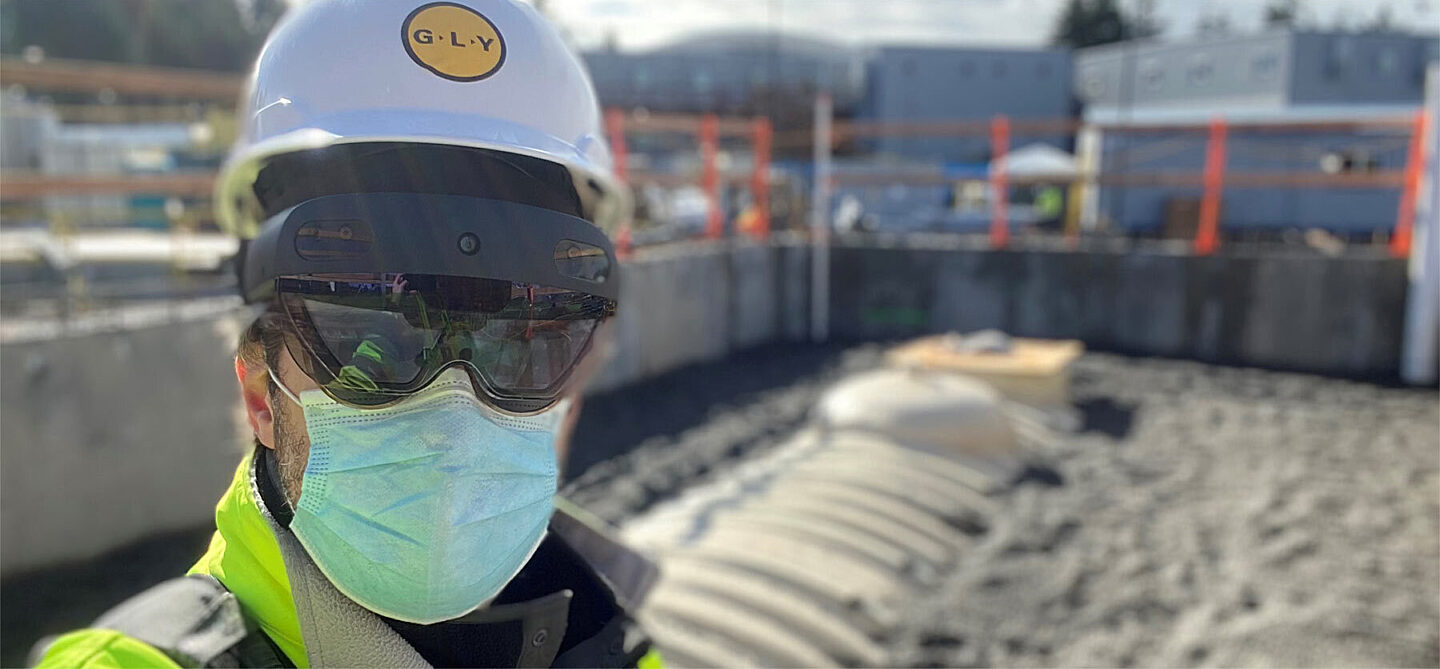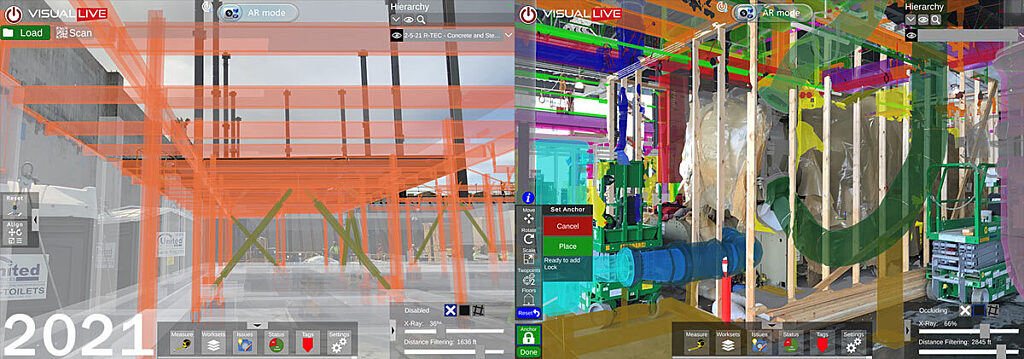Sustainability

Insights 02.01.2024
Key Considerations for Going Electric


Jackson Reid
Demetrios Stamatakis

In 2015 I wrote an exposé about the potential for Augmented Reality [AR] application in the building industry. After re-reading AR: Behind the Buzz, I realized just how far we’ve come over the last six years. Fulfilling for sure, but not surprising given GLY’s investment in R+D and the speed at which technology evolves.
When I look at the bigger picture, however, our industry in general still has a way to go before we move the needle in terms of AR implementation. Even with all the progress in software and hardware development in recent years, AR remains a tool in the mix but it is not quite the go-to tool.
Luckily, leading technology companies stay focused on tackling the problems that prevent AR from finding its place in a builder’s everyday toolbox. With continued research, a lot of patience, and most importantly our industry’s active participation—clients included— we can help advance the technology to benefit our line of work and improve return on investment.
To understand where we are, in a nutshell, I created an AR progress report for our industry based on my observations since 2015.[i]
1 to 5 Rating [1 = Needs More Effort; 5 = Exceeds Expectations]
Start-ups and funding for applicable and relevant AR continue to grow as thought leaders and advocates better control the dials between hype and ability. With this comes more variety. I see not only advancements in construction AR usage, but in manufacturing as well, which could potentially bleed over into the construction vertical. For example, Retrocausal.ai combines AR and Artificial Intelligence [AI] to track productivity and optimize workflows in manufacturing assembly lines.
GLY continues to test the leading AR software and equipment, but we have not settled on one [or two] just yet due to the rapid pace of advancement and change. This is where active participation and feedback work to our benefit. I cannot emphasize enough how important it is for A/E/C firms to partner with tech companies to test the latest and greatest. The hardware and software today is AMAZING compared to our initial explorations in 2014-2015 and meets current expectations; however, with aspirational reveals such as the Microsoft Mesh video from early March 2021, it’s clear the journey is only beginning.

In 2015, we were limited to a single point AR projection, limited file size and complexity, and zero tracking or context awareness.

In 2021, the Cloud anchors complex models into a fixed position—staying put as the viewer moves around. Hardware supports larger files sizes and integrates better with common A/E/C modeling software.
While there is evidence of AR saving costs on projects, it is not yet responsible for consistent significant project cost and schedule savings. Keep in mind, I am speaking to AR only, not Virtual Reality [VR] or AI. When looking at AR, it is like comparing ROI on electricity to someone perfectly content with using an oil lamp before the turn of the century. The good news is that we are seeing better quality in the final work product thanks to the use of AR for QA/QC reviews throughout the project.
With so many options on the market and range of pricing models, it is difficult to measure AR costs in a linear “pay X, save Y” fashion. In short, it’s complicated![ii]
I do believe that A/E/C firms investing in AR exploration today for the benefit of future applications will see a payoff. Getting on board with AR now will put you at the front of the line in terms of expertise, reputation, and innovation when the technology does become more affordable and prominent.
Until the marketing better defines actual costs, project Owner aspirations and AR product roadmaps will continue to make decision-making tough for A/E/C innovation managers who would like to scale their AR efforts but are waiting for the technology to catch up to Owner’s aspirations. Again, this is where A/E/C collaboration with technology firms will help our industry by putting in the work to define use cases and communicate the shortfalls of current AR offerings to influence the next versions.
Project Owners have the power to turn up the dial on accelerating technology innovation. Thanks to the increased demand for leveraging Digital Twins, Owners are more interested in BIM, VDC, and AR in general. Smart cities, smart buildings, and an accelerating interest for environmental stewardship also influence the spread of potential Digital Twin and AR benefits. The caveat? The industry needs more education and transparency around the capabilities that exist today to see through the hype and communicate true value to gain more Owner interest.
I am very optimistic about this one given the recent advancements in the infrastructure [e.g., BIM 360 Construction Cloud] needed to support AR and the future state of Digital Twins. Simply put, proper infrastructure could lead to a Digital Twin/AR super tool for the construction industry. To achieve this, we need to have complete confidence in what we are viewing: the model, the data within it, and its accurate placement [augmentation] within a building or site.
This varies by application or device. While most software and equipment require some level of effort to set up, I find myself saying “easy to use” more than “there’s a workaround for that” these days—thanks to the much-improved infrastructure I mentioned above as well as advances in cloud federation and hybrid rendering strategies. A/E/C firms can help improve ease of use by providing feedback to the companies defining this technology. I encourage you to reach out to these tech firms[iii] and work with them to address specific issues relating to file size and type, complexity, and accurate placement of models on site– three key drawbacks in terms of usability today.

AR will have a greater impact on the A/E/C industry and society as a whole than I originally envisioned in 2015. I truly believe AR will help usher in more equitable and diverse opportunities for remote flexibility while streamlining existing processes and eliminating unnecessary waste.
While we have come a long way, we still have a long way to go. As a champion of the technology, I am optimistic that Owner interest in AR will remain high and venture capital will continue to support its growth, but major improvements and adoption will only result from increased collaboration between A/E/C and tech firms. If you are curious how to start conversations with the many tech firms out there or simply have questions about AR in general, please reach out to me on LinkedIn.
[i] These observations look at the industry as a whole and do not represent specific firms that may be on a completely different playing field.
[ii] See the productivity J curve used to describe general purpose technologies.
[iii] Autodesk Construction Cloud, Trimble, Microsoft, Unity Reflect, ArcGIS Esri, Arvizio, Akular Digital Twins, and Via Technik Digital Twins, VisuaLive, Facebook, Apple, and Sketchfab, to name a few.
Tags: